A robot is a mechanical or virtual
artificial agent, generally an electro mechanical machine that is guided
by a computer program using electronic circuitry.
Robots can be autonomous or semi-autonomous and range from humanoids
such as Honda’s is the advanced Step in Innovative Mobility and TOSY’s.
TOSY Ping Pong Playing Robot to industrial robots, patent assist robots,
medical operating robots, dog therapy robots, collectively programmed
swarm robots, and even microscopic nano robots. By representing a life
like appearance or automating movements, a robot may transfer a sense of
intelligence or through on its own. This article discusses about IR
sensor based wireless robotic vehicle.
What is a Wireless Robotic Vehicle?
The robot is a technology
that deals with the design, construction, operation, and application of
robots, as well as computer systems is used to control, sensory
feedback, and information processing are called robots. This technology
deals with automated machines that can be placed by humans in dangerous
environments, or resemble humans in appearance, behavior. Now a todays
robots are inspired by nature contributing to the field of bio-inspired
robotics. These robots also created a new branch of robotics and soft
robotics. The mechanical techniques developed through the Industrial
age, there are more practical applications such as automated machines,
remote-control and wireless remote-control.
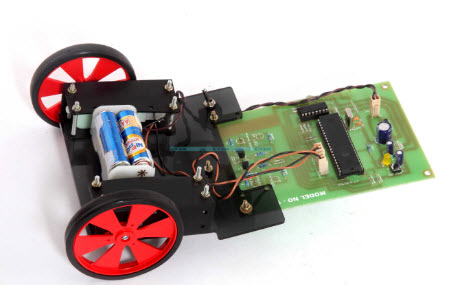
Wireless Robotic Vehicle
What is an IR Sensor?
An IR sensor
is a device that emits in order to sense some aspects of the
surroundings which detects IR radiation falling on it. The emitter is
simply an IR LED (Light Emitting Diode)
and the detector is simply an IR photodiode which is sensitive to IR
light of the same wavelength is emitted by the IR LED. When IR light
falls on the photodiode, the resistances and output voltages, change in
proportion to the magnitude of the IR light received. There are many
types of IR sensors that are built and can be built depending upon the
application. Contrast sensors (Used in Line Following Robots),
Proximity sensors (Used in Touch Screen phones), and obstruction
sensors (Used for counting goods and in Burglar Alarms) these are some
examples.
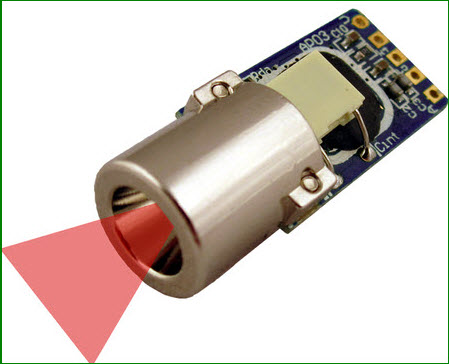
IR Sensor
Radio Frequency Remote Controlled Wireless Robot
The RF controlled wireless robotic vehicle mainly includes RF transmitter and RF receiver.
RF Transmitter
RF modules
are usually very small size and operate in the voltage range of 3V to
12V. RF transmitter modules are designed to work with 433MHz frequency
only. If transmitting logic zero, then no power is drawn by the
transmitter. For transmitting, logic is one, it consumes power about 4.5
mA with 3V. The transmitter and receiver interfaced with the 8051 microcontroller
and get desired operation. RF transmitter has supplied voltage in the
range of 3V to 6V and output power in the range of 4V to 12V.
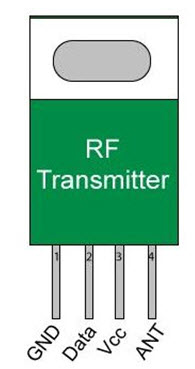
RF Transmitter
The RF transmitter circuit diagram is
shown below is used to connect different push buttons to move the
robotic vehicle in different directions like as forward, backward, right
and left. Thus, by pressing the appropriate push button, we can control
the robotic vehicle’s movement.
RF Receiver
RF receiver is also being a small in
size and RF receiver has supply current of 3.5mA with an operating
voltage of 5V. RF transmitter modules are designed to work with 433MHz
only (that should match with the transmitter frequency for communication
purpose to receive signals from the transmitter).
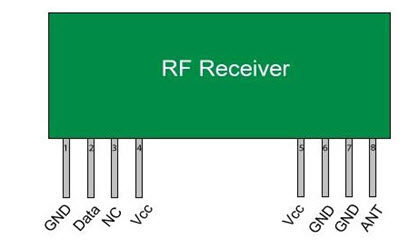
RF Receiver
RF Communication by using the Robotic Vehicle
Radio frequency (RF) consists of a
transmitter and a receiver, which is connected to an isolated circuit
that is to be controlled. A control signal is transferred from the
transmitter end in the form of radio waves or electromagnetic waves,
such that to control the device remotely, which is connected to the
receiver end. This control signal is transmitted by using
electromagnetic waves or radio waves of radio frequency. Thus, the
control signal received at the receiver end and get the accurate output
such as robotic vehicle, special purpose robot, communication purpose
device, and so on.
RF Controlled Robotic Vehicle
The main goal of this project is to
design a robotic vehicle which is controlled by a TV remote. Here, the
proposed system uses an RF technology for
remote operation. An IR sensor is interfaced to the control unit of the
robot for detecting the infrared signals which are transmitted by the
remote. An 8051 series of microcontroller is used for the preferred
operation.
At the transmitting (TX) section, push
buttons are used to send the commands to the receiver end to control the
robot’s movement, either to move in four directions like forward,
right, backward and left etc. At the receiving section, two motors
interfaced to the 8051 family microcontroller where they are used for
the vehicle’s movement.
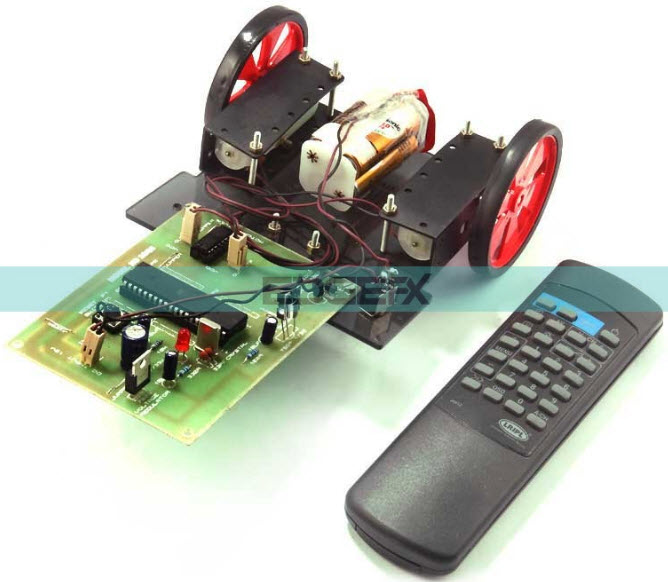
IR Sensor based Wireless Robotic Vehicle Project Kit
The TV remote generates RC5 based data
that is received by an infrared receiver interfaced with the
microcontroller. The inbuilt program in the microcontroller refers to
the code to produce preferred output based on the i/p data to function
the motors via a motor driver IC.
The RF transmitter performs as an RF
remote control that has the advantage of ample range (up to 200 meters)
with suitable antenna, while the receiver decodes before supplying it to
another microcontroller to drive DC motors through motor driver IC for required work.
Further, this project can be enhanced using DTMF technology.
Using RF technology we can control the robot by using a cell phone.
This technology has an advantage over long communication range as
compared to RF technology.
Thus, this is all about IR sensor based
wireless robotic vehicle. We hope that you have got a better
understanding of this concept.Furthremore, any doubts regarding this
concept or electrical and electronics projects, please give your feedback in the comment section below. Here is a question for you, what is the main function of IR sensor?

No comments:
Post a Comment